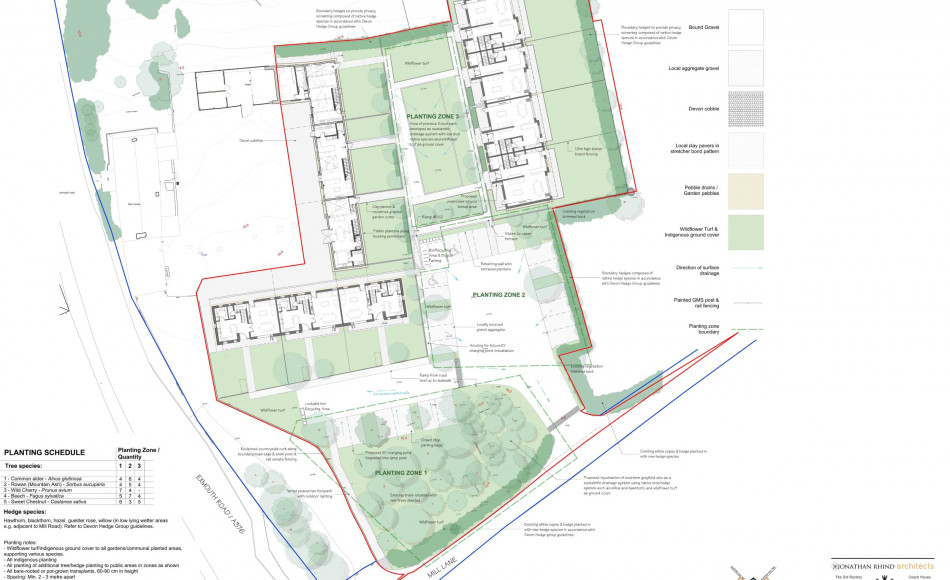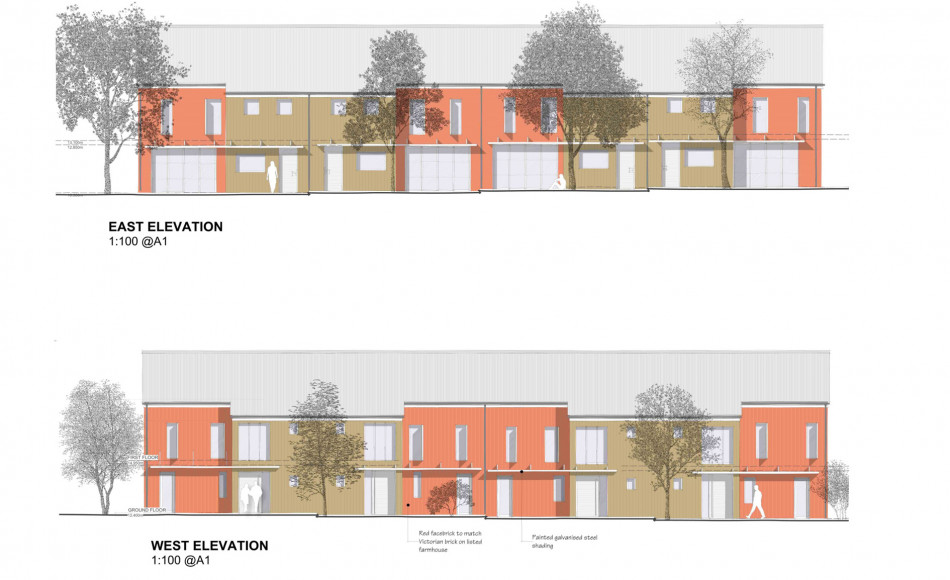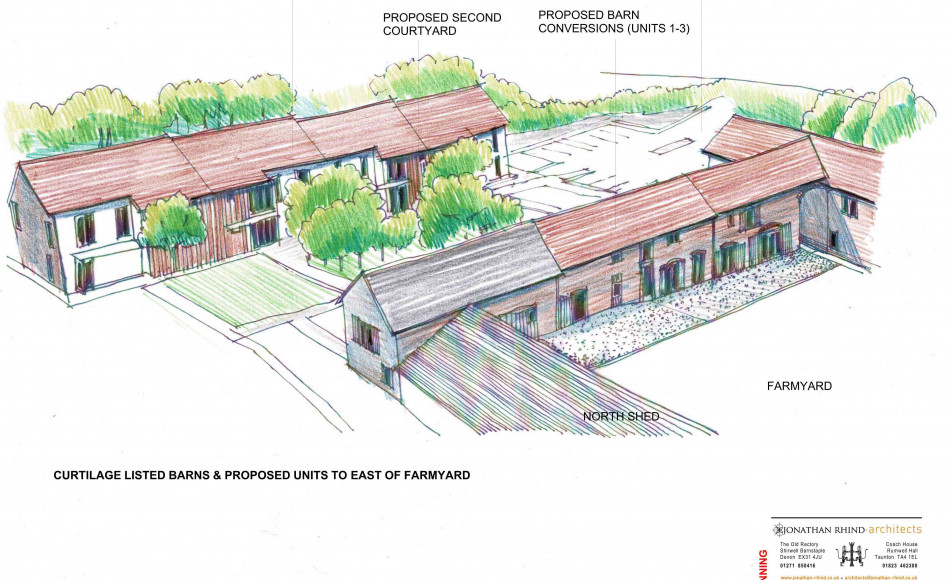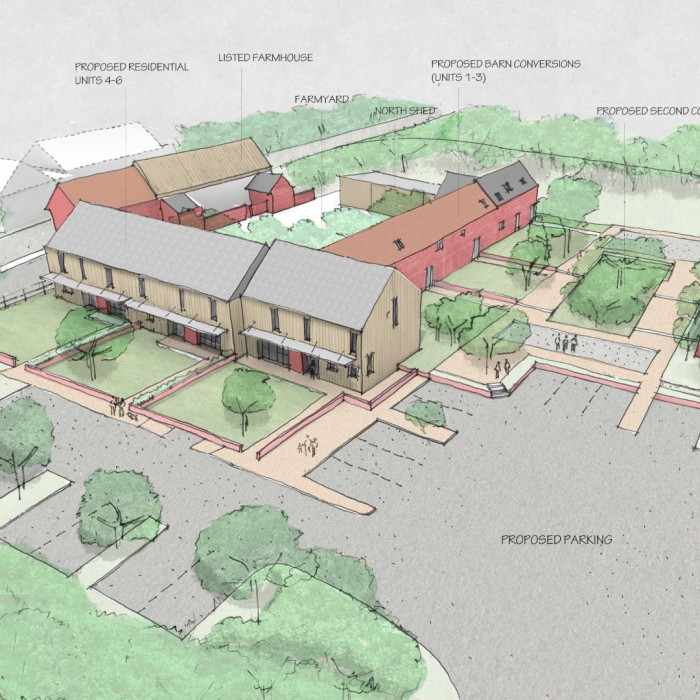Planning permission granted for Architects designed farm development
— 29 Mar 2022

The existing relationship of the buildings to each other and the farmhouse is maintained by incorporating two courtyards

Plans incorporate soft landscaping to create subtle barriers between the buildings
One of the modern barns to be replaced with sympathetically designed new houses
The historic barn will be converted to retain the original features in a nod to its agricultural heritage

A palette of sympathetic materials ensures the replacement buildings complement the historic barn and the listed farmhouse on the site


The green light has been given for a farmyard of redundant buildings on the edge of the rural Exe River estuary to be sensitively converted into a development of ten 2 and 3 bed homes.
The cluster of buildings are in the grounds of a Grade II* listed farmhouse, so the proposals take into account the sensitive setting, and are carefully designed to respond to the history of the site and surrounding buildings. Architect Julian Clayton’s scheme converts a series of historic brick barns, as well as replacing a cluster of modern disused sheds, stores and annexes with sympathetically designed new buildings to complement the historic structures.
Retaining the agricultural heritage of the historic barns, is at the heart of the proposals for the conversion of these historic buildings. To achieve this as much of the significant original form and materials are to be retained; using existing openings and adapting layouts to fit the existing fabric and keeping distinctive features such as the segmented arches to openings; and where previously there were barn doors, shutters over new windows will create the same visual appearance.
The inspiration for the new buildings is a direct response to the historic barns. Western red cedar, reclaimed timber cladding, and corrugated roof sheeting have been used to correspond with the robust and simple finishes typically found at agricultural farmsteads. Red brick has also been incorporated sparingly in consideration of the Victorian red brick elsewhere on the farm. Internally, open plan layouts and double height spaces provide natural light and are reminiscent of the open character of agricultural buildings.
To further maintain the appearance of a farm settlement, the designs are based around two open courtyards, which helps preserve the original character of the farmstead, whilst a subtle barrier to provide privacy to the homes will be created with a screen of soft landscaping. Open spaces will be planted as a wildflower meadow, while wild cherry, sweet chestnut, beech and other indigenous trees will punctuate the landscape. Hedges will be created from species such as hazel, blackthorn and guelder rose to create a kaleidoscope of habitat supporting a variety of indigenous species.
The client is keen for the project to be as sustainable as possible and the reuse of the historic barn makes this part of the scheme inherently sustainable, by providing a new use for a redundant building. The new buildings will, where possible make use of reclaimed materials, such as timber, from the original barns, and other materials will be locally sourced to reduce the carbon footprint. Further sustainable measures such as low carbon and efficient energy sources, high levels of insulation and provision of EV charging points in the parking areas, will help to make the project as environmentally responsible as possible.
There is significant evidence that the barns have undergone multiple adaptations and alterations over time as agricultural methods and needs have changed. This current adaptation to housing is part of the dynamic history of the buildings and is the next step in their ongoing evolution. The new use improves the long-term viability and usefulness of the buildings in the landscape and celebrates and preserves their relevance for many more years to come.